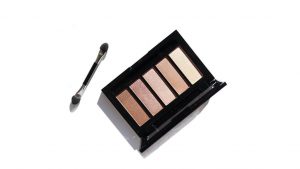
How to Choose a Microscope: Tips and Guidelines
A microscope is an essential tool for studying the microscopic world, from microorganisms to cells, tissues, and structures. Choosing the right microscope can be a daunting task, especially for beginners. There are different types of microscopes with various features and functions, and selecting the right one depends on your needs, budget, and intended use. This article provides tips and guidelines on how to choose a microscope.
Determine Your Application
The first step in choosing a microscope is to determine your application or intended use. Are you studying cells, tissues, microorganisms, or other samples? Do you need a microscope for educational, research, or clinical purposes? The answer to these questions will guide you in selecting the right microscope type, magnification range, and features.
Choose the Right Type of Microscope
There are different types of microscopes, including compound, stereo, digital, and fluorescence microscopes. Compound microscopes are suitable for observing thin and transparent samples such as cells and tissues, while stereo microscopes are ideal for larger and opaque samples such as insects, plants, and minerals. Digital microscopes are convenient for capturing images and videos, while fluorescence microscopes are useful for studying fluorescent molecules and proteins.
Consider Magnification and Resolution
Magnification refers to the degree of enlargement of an object, while resolution is the ability to distinguish between two adjacent points. The magnification range and resolution of a microscope are critical factors in determining the clarity and detail of the images. Higher magnification does not always mean better quality, as the resolution must also be high enough to distinguish fine details.
Evaluate the Quality and Durability
The quality and durability of a microscope are essential for long-term use and reliability. Look for a microscope with high-quality optics, robust construction, and ergonomic design. Check the material of the lenses, objective, and eyepiece, as well as the overall build quality. A well-built microscope can withstand regular use and last for years.
Check the Illumination System
The illumination system is critical for providing proper lighting and contrast in the specimen. Most microscopes use either LED or halogen bulbs, and the type of illumination can affect the quality of the images. LED bulbs are energy-efficient and provide consistent lighting, while halogen bulbs offer brighter and warmer light. Consider the type of samples you will be observing and choose the illumination system accordingly.
Look for Ease of Use
A user-friendly microscope can save time and reduce errors. Consider the ease of use when selecting a microscope, including the accessibility and adjustability of the knobs, focus system, and other controls. The microscope should also be comfortable to use, with ergonomic eyepieces and a stable base.
Check the Cost
The cost of a microscope is an essential consideration, especially for students, educators, and small laboratories. Microscopes can range from a few hundred dollars to thousands of dollars, depending on the features and specifications. Determine your budget and select a microscope that offers the best value for money.
Read Reviews and Recommendations
Before purchasing a microscope, read reviews and recommendations from other users, professionals, and online sources. This can provide insights into the quality, performance, and user experience of the microscope. Look for reviews from users with similar applications and requirements to yours.
Consider Warranty and Support
A microscope is an investment that requires proper maintenance and care. Consider the warranty and support options when choosing a microscope, including the length and coverage of the warranty, as well as the availability of technical support and repair services.
Buy from a Reputable Supplier
Finally, buy a microscope from a reputable supplier that offers high-quality products and reliable customer service. Look for suppliers with a proven track record, good reputation, and positive customer feedback. Check if the supplier provides detailed product information, clear pricing, and flexible payment options. Also, ensure that the supplier offers secure payment and shipping options, with a reasonable return policy in case of defects or dissatisfaction.
In conclusion, choosing the right microscope requires careful consideration of various factors, including your application, type of microscope, magnification, quality, illumination system, ease of use, cost, reviews, warranty, and supplier. By following these tips and guidelines, you can select a microscope that meets your needs, budget, and expectations, and enables you to explore the microscopic world with clarity and precision.
For more tips, check out the following article: How to Choose the Perfect Laptop for Your Needs











